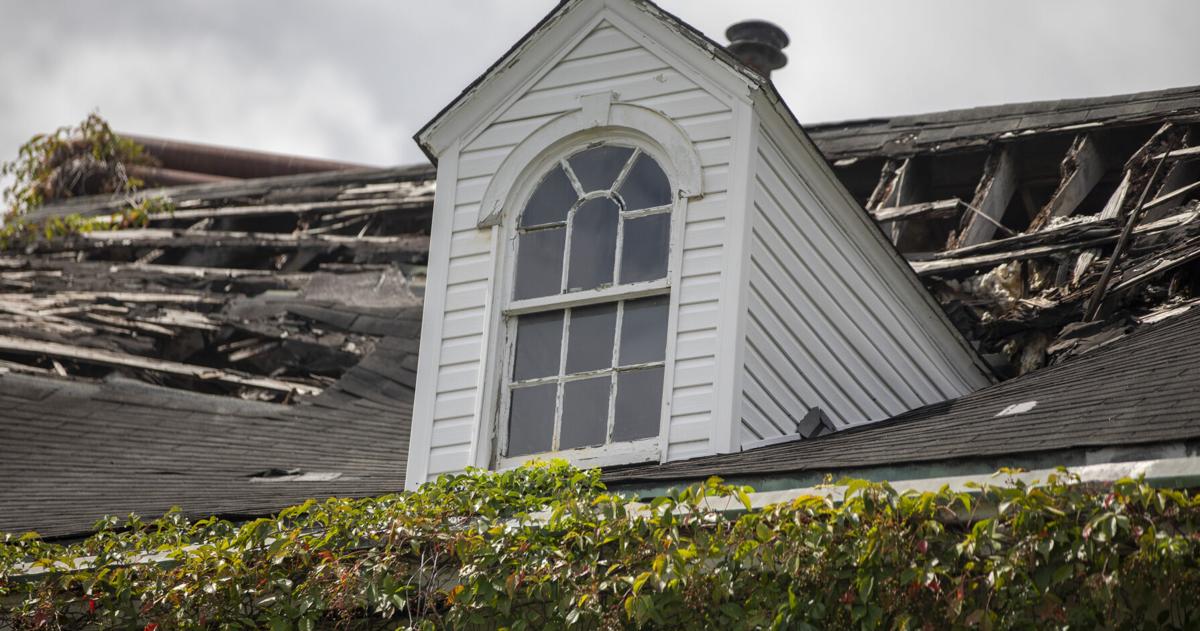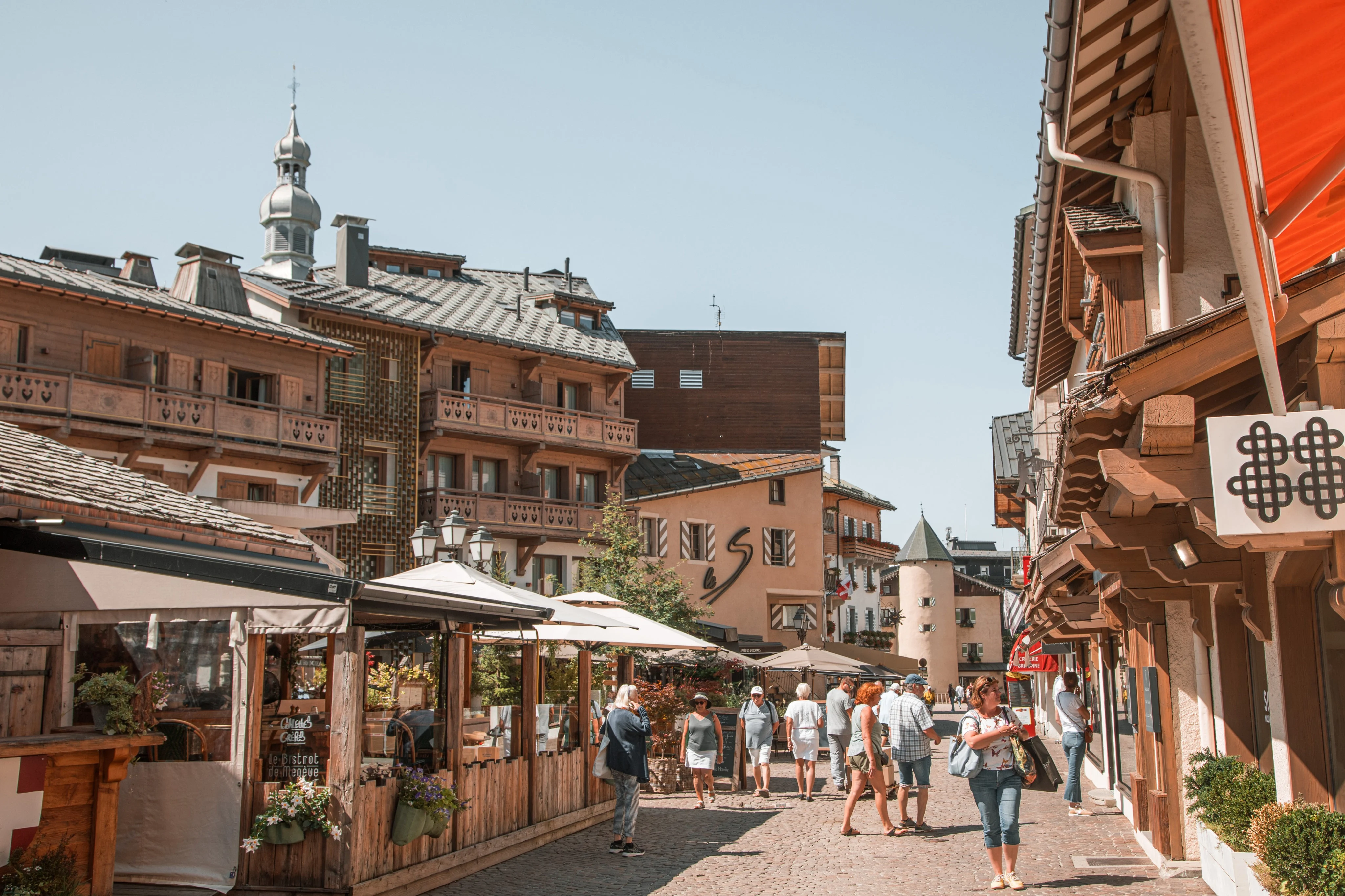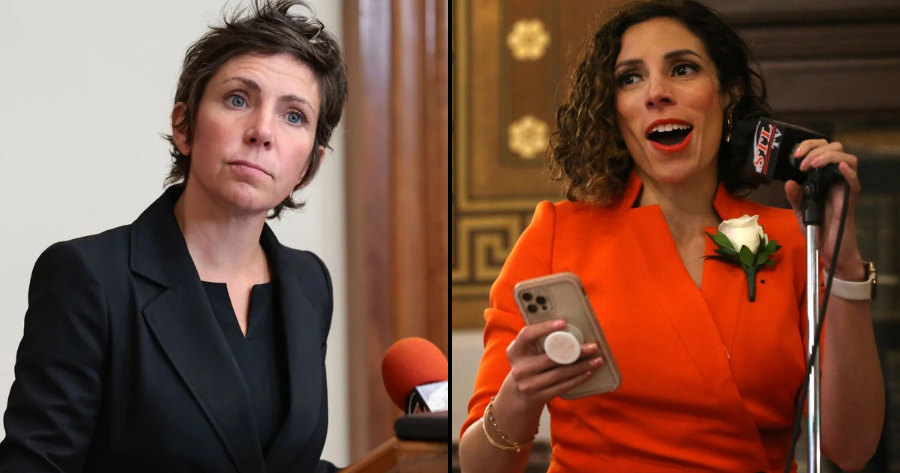
WEST ASHLEY — Nearly a century ago, new and improved vegetables were developed inside a two-story brick building on U.S. Highway 17.
Nowadays it’s mostly vines and weeds that sprout and spread at the former breeding lab, which looms, hauntingly, behind a roadside historical marker.
The structure’s white façade is smudged and stained with dirt, watermarks and mold. Its weather-worn roof, which has been stripped bare in spots from years of storms and blistering heat, is slowly collapsing. Dormers sink into the attic.
Despite operating a graduate program in historic preservation in one of the country’s oldest cities, Clemson University is accused of failing to care for several buildings on its Lowcountry agricultural research campus. This has led to a civil lawsuit, a city-issued warning and accusations that the university is perpetrating demolition by neglect.
The cluster of deteriorating buildings at Clemson’s Coastal Research and Education Center sits on 325 acres along U.S. Highway 17, or Savannah Highway. This area had once been the far reaches of West Ashley, before rampant growth expanded Charleston’s largest residential area. Built in the 1930s as part of a pioneering crop research facility for the U.S. Department of Agriculture, the structures were used for decades to help grow hardier, and tastier, fruits and vegetables, often with the help of Clemson scientists.
While crops still grow in areas of the research lab and farm, some of its buildings are in advanced states of decay.
The original federal vegetable laboratory, which stands as a centerpiece of the property, is uninhabitable. Behind this dilapidated building stands three long greenhouses, one of which is filled with weeds. Connecting them is a headhouse, a long brick structure running perpendicular to the greenhouses. It also has holes in its roof and collapsing ceilings.
The university acquired these buildings and three surrounding acres in 2018 from the USDA. Since then, it has performed few repairs.
Instead, the university requested in 2020 to raze the facility and return the land to crop production. It sought an endorsement from Charleston officials to demolish the structures, some of which are eligible for inclusion on the National Register of Historic Places due to their agricultural heritage.
Yet city planners did not endorse the request, noting the architectural merits and history of the site. Clemson withdrew its application in January 2021, before a public meeting was scheduled.
No plan B was announced. Lacking permission to pull down the buildings, Clemson allowed Mother Nature to continue her subtler, slower demolition process in place of the wrecking ball.
A month ago, city officials intervened, ordering Clemson to clean up and protect the structures, as well as craft a plan to preserve them.
“Unfortunately, it is clear there has been some lack of attention paid to these buildings, and timeliness is important,” said Robert Summerfield, who directs Charleston’s planning and preservation department. “Clearly there is a maintenance concern today that needs to be addressed to prevent any more damage or degradation.”
Clemson has started complying with these orders, stripping vines from the front of the former lab. The university, though, still has designs on tearing it down.
A noble mission to guard U.S. food supply
Almost a century ago, the forlorn farm buildings were part of a cutting-edge federal laboratory. In an effort to help struggling farmers and shore up the nation’s food supply, Congress in 1935 established nine agricultural research centers across the country.
The first of these U.S. Vegetable Breeding Laboratories was built in Charleston. In 1936, scientists gathered downtown for a two-day conference at the Francis Marion Hotel to discuss challenges facing American farms and how to improve farmers’ ability to grow and sell healthier and longer-lasting produce.
The USDA bought a 452-acre former phosphate mine on the north side of U.S. 17 to grow vegetables, as well as a three-acre plot across the road. The small plot of land was beside the site of Clemson’s Truck Experiment Station, which also had a mission to grow and improve Southern crops.
The two-story brick laboratory, headhouse and greenhouses were built in 1936. The Clemson land featured another white, two-story structure, built in 1932.
This proximity resulted in a nearly century-long research collaboration between the federal government and Clemson.
“If a crop can survive in Charleston, it can survive anywhere in the world,” said Pat Wechter, director of Clemson’s Coastal Research and Education Center. “We consider this the proving ground for new vegetables and fruits.”
Historically, one of the most famous foods cultivated here was the Charleston Grey watermelon. Today, almost every modern cultivar of watermelon contains elements of the Charleston Grey, which has a thick rind and oblong shape, so they can be packed efficiently on trucks headed to market.
“You can stack them like you stack artillery shells,” Wechter said.
A few years ago, Wechter and his colleagues developed the Carolina Strongback watermelon. It features a rootstock resistant to soil disease common in the South.
Wechter oversees seven researchers whose expertise includes plant breeding, pathology, weeds and insects. This team, along with federal scientists, does noble work helping guard the nation’s food supply, which Wechter describes as “always in danger.”
“It’s a constant battle between plants and pathogens, and the armies change every year,” he said.
Beyond challenges posed by microorganisms, some coastal farmers also battle saltwater intrusion and soils depleted from overgrowing tobacco and cotton.
Wechter is unabashed about claiming that Charleston’s vegetable lab is one of the most important research facilities in the United States. He mentioned recent efforts to develop better mustard plants and other leafy greens, as well as more watermelons and cantaloupe, through a process he deemed participatory breeding. That means he and his team consult with growers as well as chefs, vegetable processers and others to learn how to improve crops.
“They’re going to tell you this place saved their bacon more than once,” Wechter said. “You sleep well at night knowing you’re feeding people.”
Before taking the Clemson job in 2022, Wechter worked for the USDA. His former office was directly above his current workplace, as USDA and Clemson scientists share space within a modern, red-brick vegetable breeding lab built in 2003 across the road at 2700 U.S. Highway 17.
Since at least the 1990s, scientists had outgrown the old 1930s-built facility across the highway and were desperate for new digs.
“We’re using trailers for labs and turning storerooms into labs. … And we’re widely scattered,” Claude Thomas, a former director of the vegetable lab, said in 2000. “Clemson is the same way.”
After the move, the old buildings went unused and unkept.
In 2018, the federal government reached a memorandum of agreement with the S.C. State Historic Preservation Office and the federal Advisory Council on Historic Preservation to convey the property to Clemson, which conditioned its participation on being able to demolish the lab buildings. The agreement stipulated Clemson could destroy the buildings so long as it documented and commemorated the structures, including the placement of a historical marker.
Clemson satisfied these conditions, in part, by hiring a researcher to document the history of the vegetable lab. Nonetheless, when the university sought to topple the buildings in late 2020, city planners balked.
As time passed, rainwater penetrated the dilapidated structures, causing roofs and ceilings to cave. Weeds grew vigorously within the greenhouses and around the buildings. Motorists traveling along U.S. 17 began to notice the disrepair in plain sight, including a young and persistent Charleston landscaper who had a bright idea.
Greenhouse savior
A single thought crossed Chad Husselbee’s mind each time he drove by the farm: government waste.
Another thought soon popped into his head: the old greenhouses possibly could be reused.
“They had been slowly trying to get rid of this greenhouse property for years,” Husselbee said. “I didn’t think it was fair to just demolish them.”
So Husselbee made Clemson an offer. He would preserve the three greenhouses, which measure as large as 30-by-150-feet, by moving them to the Ruffin community in Colleton County.
This, he dreamed, would be the start of something big for Ruffin, where no more than a few thousand people live. Not only would the greenhouses be used, Husselbee would replicate the headhouse and create an agricultural museum. Husselbee claimed in his lawsuit that the facility would be the “cornerstone of efforts to incorporate the rural community of Ruffin, bringing with it a multi-million-dollar agritourism, education and historical preservation center.”
If some elements of the plan seemed grand, the basic idea was simple: disassemble and move the greenhouses.
Clemson became interested and, starting in early 2021, communicated with Husselbee for the next two years, helping him try to obtain the greenhouses.
As he prepared a site for the surplus greenhouses — hiring an architect, clearing and leveling land, creating a foundation — he also volunteered to beautify Ruffin, painting fire hydrants, cleaning off overgrown sidewalks and becoming an Adopt-A-Highway supporter. Husselbee, who splits time between Charleston and Ruffin, also began a communications blitz with numerous elected officials, civil servants and corporations, looking for partners, grant money, donations and any other type of support possible.
Among those who responded was Anita Zucker, the local billionaire leader of The InterTech Group of North Charleston. On March 11, 2021, a spokesperson for Zucker endorsed the idea in a note to Laura Stoner, who manages Clemson’s land and capital assets and who became Husselbee’s main point of contact at the university.
“This message is intended to convey Ms. Zucker’s support for Mr. Husselbee’s plan to repurpose the structures to be used for his business and we are thrilled to hear his plans will create new job opportunities during this difficult time,” Mike Fewell of The InterTech Group wrote in part.
City planners also liked Husselbee’s plan. They suggested Clemson re-apply to demolish the greenhouses on the condition the structures would be removed and reused in Ruffin.
“I think city staff can support the moving of the greenhouses and we could make this recommendation to the Board …” R. David Meeks, the administrator of Charleston’s Design Review Board, wrote on Feb. 28, 2022.
With blessings like these, Husselbee believed he was on a roll. His confidence in the project was also bolstered by the communications he said he shared with Stoner.
“I was never told ‘No.’ … There was never a conversation about, ‘It’s impossible, it’s never going to happen,’ ” said Husselbee. “It was the opposite – encouragement.”
Then, in late 2022, he said Stoner shared some bad news. Clemson would be keeping the greenhouses.
“And that was it,” Husselbee said. “I was kind of flabbergasted.”
A suitor on the inside
Husselbee didn’t know it, but someone at Clemson wanted the greenhouses.
When Wechter took over as director of Clemson’s coastal center in October 2022, he gained control of the West Ashley campus. He saw the vegetable lab as outdated, dilapidated and altogether useless for his mission of protecting plants from pathogens. The headhouse and greenhouses, though, were a different story.
“If you demo those greenhouses,” he recalled saying, “I will not take this job.”
Husselbee was similarly headstrong. A few months after Wechter’s hiring, he pleaded his case to Max Allen, a senior vice president and chief of staff at Clemson.
“I’ve spent four years investing time, labor and money to meet Clemson’s requirements, including rebuilding a replica of the ‘head house’ and acquiring equipment to fulfill the relocation,” Husselbee wrote in May 2023, according to court records. “Laura Stoner communicated as recently as December 2022 that final approvals were imminent. Then, suddenly, Clemson reversed course. I am seeking a resolution to this unjust shift.”
Clemson was unmoved.
Allen replied six days later, stating, “I appreciate your interest in wanting to relocate and save the greenhouses, however, the university has made the decision to maintain the greenhouses where they stand and put them back into use.”
Two years later Husselbee sued the university in federal court. Clemson declined to answer questions about its interactions with Husselbee.
Representing himself, Husselbee claimed “multiple Clemson officials explicitly approved the relocation plan, coordinated efforts, and then reversed course. This conduct triggered substantial financial and logistical harm. … Public accountability, transparency, and the protection of public assets are at stake.”
A federal judge dismissed the complaint in July, citing an absence of federal jurisdiction, and suggested the case was better suited for state court.
‘Perfectly missed opportunity to reuse something extraordinary’
Since staking a claim to the greenhouses a few years ago, Wechter has cleared two structures of weeds and filled them with experimental crops. He did much of the dirty work himself. He has replaced old fan motors and installed new water and power lines in the nearly 90-year-old glass structures.
Everything looks old, he said, “but even with older stuff, we’re doing 21st century research.”
In a perfect world, Wechter said he would have the money to extend the shortest greenhouse, restore the attached headhouse and build a new $8 million lab, which would allow him to hire more scientists.
Yet even with a blank check, he said, he would not choose to rehabilitate the original brick vegetable lab. Simply put, he said an old building is not compatible with cutting-edge research and “is not going to help a grower’s problems.”
“It’s not a useful building,” Wechter said. “It’s one thing to have history, but if it’s an eyesore it’s just not worth it. … No one should ever walk into that building again.”
And no one will anytime soon, per city orders.
“We ask that you secure, board up, and tarp these structures to prevent any further damage,” a city official said in an Aug. 29 letter. “The vines and other vegetation will also need to be removed. This should be done within 30 days. We will require a ‘rehabilitation’/preservation plan within the next 12 months.”
This warning was issued after Husselbee complained and shared his opinion that Clemson has violated the memorandum of agreement through its inaction regarding the structures.
In response, Meeks, with the Design Review Board, emailed several federal and state preservation officials.
“It was brought to our attention that Clemson never notified the MOA that the City denied the demolition of the buildings. And that the buildings have been left unprotected and it appears that Clemson is seeking demolition by neglect of these historically significant buildings,” Meeks wrote. “We are now looking into what we can do to stop this demolition by neglect. These buildings need to be renovated and used.”
Architectural historian Brittany V. Lavelle Tulla agreed that Clemson has not adequately cared for these historic structures.
“UGH, another great old property that has seemingly been ‘forgotten,’ ” said an email from Tulla, who familiarized herself with the vegetable lab and greenhouses when Clemson hired her business, BVL Historic Preservation Research, to write a mandated report about the buildings. “These buildings are of national importance and tell such a significant story. We lose them, we lose giants. What a perfectly missed opportunity to reuse something extraordinary, unique, and full of character.”
Clemson downplayed these concerns. Any disrepair is the result of having budgeted enough money for demolition but not restoration, according to the university, which operates on a $2 billion annual budget and has an endowment of more than $1 billion.
“The funding has to be there to pursue the project,” Stoner said. “Clemson does not do demolition by neglect.”
What’s next
Forty years ago, Charleston Mayor Joe Riley entertained the idea of trying to persuade the USDA to sell its property in West Ashley. The idea was to let the farm fields be turned into suburbia.
“The land has become very valuable from the development standpoint. It is in a pattern of growth. In years to come, it will be surrounded by valuable development,” Riley said in 1985, a decade into his 40-year tenure as mayor.
Since then, the city has grown considerably. Subdivisions and apartment complexes now line U.S. 17 far beyond the vegetable lab, the homes replacing woods and wetlands where Charlestonians once hunted and went birding.
Yet Wechter said there’s no plans to move or change the mission for the Clemson campus, which abuts a considerable amount of marshland along the Stono River. The university has turned down an idea to put satellite commuter parking lots on the site. Wechter said Clemson won’t be turning the fields into a golf course. Its only plans are to continue protecting the nation’s food supply.
Clemson employees have removed vegetation from the buildings since the city issued a warning. It is in talks with builders to place plywood and tarps on the structures. The university said it eventually hopes to repair the greenhouses and headhouse. But it still would like to raze the historic vegetable lab.
“We’ve never given up the hope for demolition,” Stoner said.
She and Wechter objected to making expensive repairs to a lab building that is fundamentally not suited for modern research. Even though Clemson has a robust budget and endowment, resources are not unlimited and new laboratory buildings would be a better fit for the campus should money somehow materialize, they said.
As for Husselbee, he’s uncertain about what is next for him.
The landscaper said he hopes that mechanisms can be put in place to better protect historic sites owned by the government. He claimed that he doesn’t feel entitled to anything, but regrets that he and Clemson could not execute his plan.
“This was literally slated for the trash — nobody wanted it. I saw an opportunity in what everyone else was ready to throw away. Based on what I’ve learned in life, I came up with a plan that could be a successful business, but also one that gave back to the public …” Husselbee said in a text message. “For years I worked directly with Clemson on relocation efforts, and everything I invested — my time, my resources, my vision — was because they led me to believe this was going to happen.”
Husselbee also was disappointed to learn, through Freedom of Information Act requests, that a federal official who responded to his concerns about the greenhouses had coordinated with Clemson before replying to him, and even used a Clemson official’s exact words in the response from the federal government.
He chuckled at that discovery, but he also sighed. Husselbee’s rescue efforts have made for an exhausting ride.
“All I ask now is support — for me and this project — from the public, government or private sector, so that together we can ensure these historic structures are preserved and finally put back to work for the people they were built to serve,” Husselbee said.



